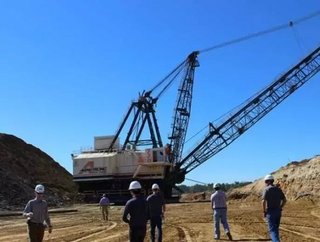Draglines 101: How They Do It

In the world of mining, not all draglines are created equal. The heavy-duty machinery is used as a primary excavating tool in many surface mining operations worldwide. These highly productive and massive pieces of equipment offer the lowest material cost per ton and have an operating life span of 40 years. Pound for pound, draglines are the most productive and versatile machines in the mining industry.
How they work

Utilized in a similar fashion as cranes, draglines are used primarily for open-pit operations to dismantle and transport materials. In strip mining operations, draglines are used to remove overburden from mines. Unlike most mining equipment, the bulk of draglines are not diesel-powered. Their power consumption relies on a direct connection to the high-voltage gride at voltages of between 6.6 and 22kV. A typical dragline can use up to six megawatts during normal digging operations.
The biggest and baddest draglines ever built
The mining sector has seen its fair share of extravagant dragline machinery. The industry, which boasts some of the biggest and baddest equipment the world has ever seen, has encountered some massive draglines.
Manufactured in the United States, the Bucyrus Erie 2570-W dragline is currently the world’s largest operational dragline. Nicknamed Old Glory, the dragline is owned and operated by Peabody Energy and currently utilized at the company’s Bear Run mine in Indiana. The dragline is equipped with an impressive scooping depth of over 215 feet with a bucket capacity of 115 cubic yards. Weighing in at over 6,000 tons, the Bucyrus Erie 2570-W is over 200 feet tall with an operating radius of 300 feet.

Another Bucyrus dragline to make our list, the 8200 Walking Dragline is one of the world’s largest draglines currently in operations. Nicknamed Liberty, the massive dragline weighs over nine million pounds and operates with a 160-yard bucket. This behemoth is close to seven stories high and can move roughly 250,000 pound of earth across 200 yards in less than 60 second.
The “Big Muskie” was once the world’s largest earth moving machine. Built in 1969 and dismantled in 1991, the Big Muskie could move 39 million pounds of earth and rock every hour, reaching coal seams 100-150 feet down. Weighing nearly 12,000 tons, this dragline was 22 stories tall with a boom length of 310 feet. In May 1999, the Big Muskie was destroyed with the remainder of the dragline being used as a centerpiece to memorialize the men and women who mined in Ohio.

The future of Draglines
Like other mining equipment, the future of draglines is automation.
Despite the move towards automation, draglines have remained relatively unchanged in design and control systems. That’s all about to change in the next few years.
Companies like CSIRO in Australia, MineWare and CRCMining are working with the University of Queensland in Australia to advance dragline operations to automation. The companies are focusing on developing and implementing a new dig sequencing technology that aims to identify the best sequence of operations and movements for a dragline to excavate in the most efficient and productive way.
The technology is expected to give operators instantaneous position, digging and dumping guidance, supporting them to make critical decisions around the sequencing of excavation. According to MineWare CEO and project co-leader Andrew Jessett, dragline operations will benefit from a significant improvement in productivity.

“On draglines around the world, we continue to see inconsistencies in operator sequences and techniques, which can result in variations in productivity rates in excess of 10 percent. By giving dragline operators accurate, instant guidance, we want to close the gap on these variations and improve productivity as a direct result.”
He adds, "Consistency is very important, that range of variability between operators can be anywhere up to 10 or 15 percent and in dollar terms that's very significant.”
Although improving productivity and saving time and money isn’t a new direction for the mining industry, the new technology will help speed up the automation process for mining equipment.






